 This latest full-length from Australian composer Madeleine Cocolas is billed as a companion piece to 2022’s acclaimed Spectral, as the two albums have something of a conceptual yin/yang relationship: Spectral was devoted to “evoking memories and emotions,” while Bodies “is about being present in your body.” The title also has a dual meaning this time around, as Cocolas sought to explore “similarities between bodies of water and human bodies” and “blur the boundaries between them.” As is the case with most conceptual inspirations behind instrumental albums, it is hard to say how much of that actually comes through in the music, but it makes for interesting contextual background and it seems to have triggered a significant creative evolution, as Madeleine makes beautiful use of manipulated field recordings. That element alone is enough to set her apart from other ambient/drone artists in the Room40 milieu, but I was also struck by her talents for sound design and virtuosic ability to interweave countless moving parts in dynamically compelling ways. At its best, Bodies feels like a minor deep listening/headphone masterpiece.
This latest full-length from Australian composer Madeleine Cocolas is billed as a companion piece to 2022’s acclaimed Spectral, as the two albums have something of a conceptual yin/yang relationship: Spectral was devoted to “evoking memories and emotions,” while Bodies “is about being present in your body.” The title also has a dual meaning this time around, as Cocolas sought to explore “similarities between bodies of water and human bodies” and “blur the boundaries between them.” As is the case with most conceptual inspirations behind instrumental albums, it is hard to say how much of that actually comes through in the music, but it makes for interesting contextual background and it seems to have triggered a significant creative evolution, as Madeleine makes beautiful use of manipulated field recordings. That element alone is enough to set her apart from other ambient/drone artists in the Room40 milieu, but I was also struck by her talents for sound design and virtuosic ability to interweave countless moving parts in dynamically compelling ways. At its best, Bodies feels like a minor deep listening/headphone masterpiece.
The opening “Bodies I” provides an alluring introduction to Cocolas’s current vision, as it slowly fades in as a seismic drone throb beneath gently undulating and murmuring strings lingering in a flickering state of suspended animation. Gradually, it intensifies in power and takes on a more spacy, dreamlike tone, but the overall effect is akin to that of a billowing cloud of blissed-out ambiance with a roiling and unpredictable swirl of anguish and unease at its center. It is probably one of the most mesmerizing headphone pleasures on the album, but the following “Drift” is a similarly inspired slow burn. For one, it is the first piece to noticeably involve water sounds and her talent for sound design transforms those sounds into something that feels wonderfully immersive, viscous, and physical. “Drift” is also an unusually melodic piece, as a pulsing organ melody is gradually fleshed out with warm, rich chords. Also unusual: the chords and melody predictably steal the focus initially, but closer listening reveals a vivid psychotropic wonderland beneath the surface, as the layers of moving parts increasingly bend, smear, pan, change speeds, change rhythms, and organically ebb and flow around the melody. To my ears, that is what makes Madeleine Cocolas’s work feel like something special and singular: her genius for weaving together richly detailed layers of continually evolving field recordings, processed voices, and electronic instruments into a seamless organic fantasia.


 This is the vinyl debut from American Primitive-inspired French guitarist Raoul Eden, but it previously surfaced as a self-released CD back in 2023 (a previous “incarnation,” if you will). That makes the chronology of Eden’s evolution a little blurry, as his other album (Anima, released on Scissor Tail) was recorded that same year. In any case, Incarnation is an absolute tour de force, as Eden tries his damndest to fill the void left by Jack Rose’s passing and gamely spices up his “primitive psychedelic blues” vision by incorporating Indian, Arabic, Turkish, Moroccan, and Taureg influences. Obviously, the solo steel string guitarist tradition of looking to the East for cool ideas goes back to at least Robbie Basho, but Eden executes that assimilation quite beautifully (and unusually seamlessly). In fact, Eden executes just about everything beautifully and that is the bit that elevates Incarnation into something quite striking and singular, as he brings an ecstatic intensity to almost every single one of these six pieces, resulting in a strain of fingerstyle guitar that often gloriously feels like a runaway train leaving a rain of sparks in its wake.
This is the vinyl debut from American Primitive-inspired French guitarist Raoul Eden, but it previously surfaced as a self-released CD back in 2023 (a previous “incarnation,” if you will). That makes the chronology of Eden’s evolution a little blurry, as his other album (Anima, released on Scissor Tail) was recorded that same year. In any case, Incarnation is an absolute tour de force, as Eden tries his damndest to fill the void left by Jack Rose’s passing and gamely spices up his “primitive psychedelic blues” vision by incorporating Indian, Arabic, Turkish, Moroccan, and Taureg influences. Obviously, the solo steel string guitarist tradition of looking to the East for cool ideas goes back to at least Robbie Basho, but Eden executes that assimilation quite beautifully (and unusually seamlessly). In fact, Eden executes just about everything beautifully and that is the bit that elevates Incarnation into something quite striking and singular, as he brings an ecstatic intensity to almost every single one of these six pieces, resulting in a strain of fingerstyle guitar that often gloriously feels like a runaway train leaving a rain of sparks in its wake.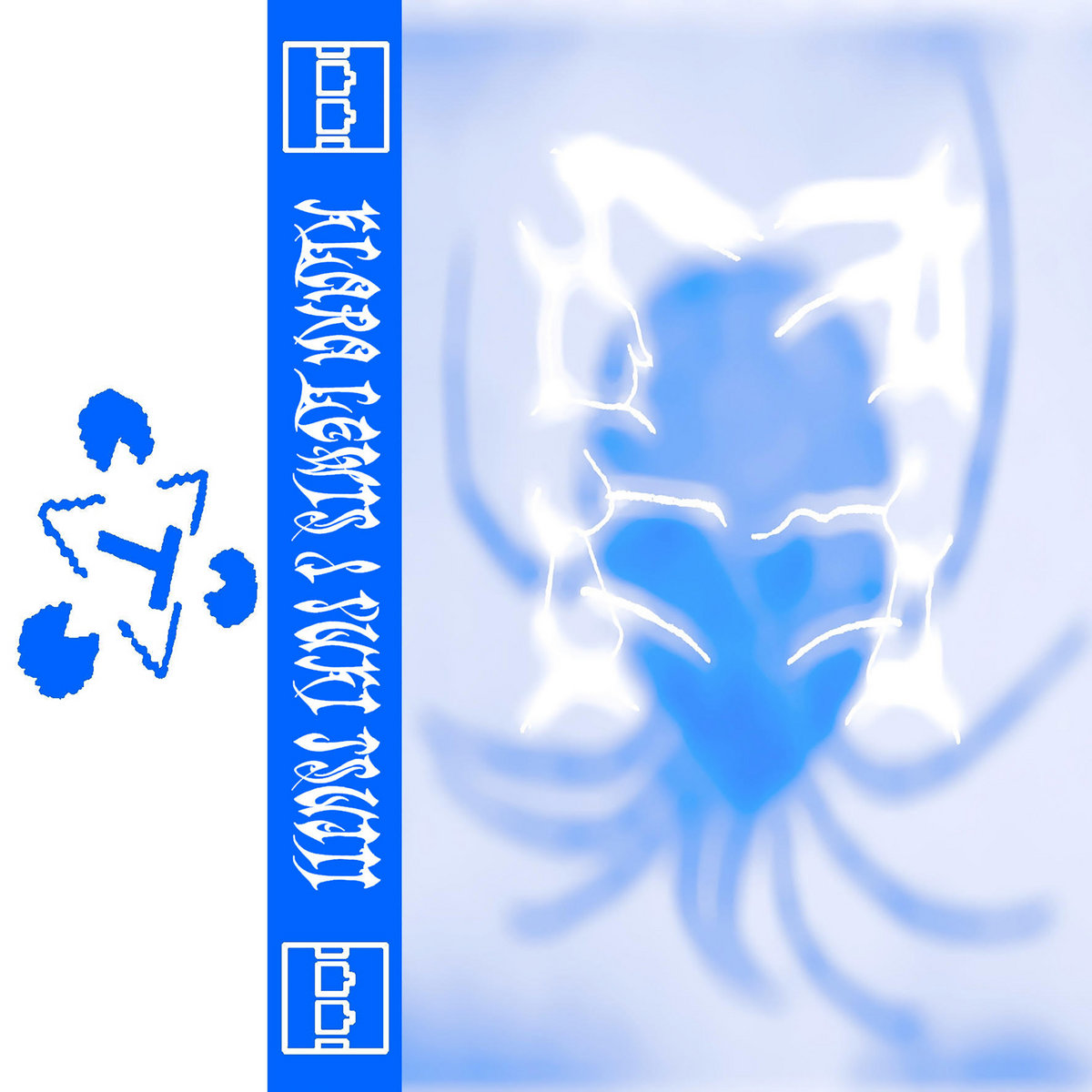 I am always eager to hear anything new from the reliably weird and inventive Klara Lewis, but the unpredictability of her collaborative releases is especially pronounced. Notably, Salt Water is the first of those collaborations in which I was not previously familiar with her creative foil. It also seems like quite a leftfield pairing on paper, given that Yuki Tsujii is best known as the guitarist for a hard-to-categorize Japanese rock band based in London (Bo Ningen). Fortunately, everything made sense once I learned that Tsujii is now based in Stockholm (Lewis is Swedish) and that he had previously collaborated with both Faust and Keiji Haino (his primal, convulsive playing here would be right at home on an album by the latter). Also of note: Lewis is described as a "loop finder" in the album's description, which feels like an extremely apt description of her role on Salt Water. Unsurprisingly, the loops that she found are extremely cool, resulting in an album that often sounds like scrabbling guitar noise assaulting an eclectic array of '60s exotica, classical, and film score samples.
I am always eager to hear anything new from the reliably weird and inventive Klara Lewis, but the unpredictability of her collaborative releases is especially pronounced. Notably, Salt Water is the first of those collaborations in which I was not previously familiar with her creative foil. It also seems like quite a leftfield pairing on paper, given that Yuki Tsujii is best known as the guitarist for a hard-to-categorize Japanese rock band based in London (Bo Ningen). Fortunately, everything made sense once I learned that Tsujii is now based in Stockholm (Lewis is Swedish) and that he had previously collaborated with both Faust and Keiji Haino (his primal, convulsive playing here would be right at home on an album by the latter). Also of note: Lewis is described as a "loop finder" in the album's description, which feels like an extremely apt description of her role on Salt Water. Unsurprisingly, the loops that she found are extremely cool, resulting in an album that often sounds like scrabbling guitar noise assaulting an eclectic array of '60s exotica, classical, and film score samples. This Swiss percussionist has been quietly carving out a very cool and unique niche for himself over the last decade, as he continually finds unusual conceptual scenarios to combine with his virtuosic playing. I greatly enjoyed 2021's aptly titled Locked Grooves, but had not yet delved too deeply into his earlier work, so I had missed the first installment of Hidden Tracks: 2017's Basel – Genève. For that album, Sartorius brought his drumsticks along for a 10-day, 270km hike along Switzerland's Jura Ridgeway Trail and recorded improvised beats on whatever intriguing sound sources he encountered (trees, empty silos, corn stalks, etc.). On this latest installment, his journey is now vertical, as Sartorius kept a similar beat diary as he climbed from the Italian village of Domodossola "to the peak of Weissmies (4017m above sea level) in the Swiss Valais." In theory, that upped the game considerably constraint-wise, as Sartorius gradually leaves behind both humanity and trees in his ascent, but that comparative dearth of available sound sources was no match for his resourceful inventiveness.
This Swiss percussionist has been quietly carving out a very cool and unique niche for himself over the last decade, as he continually finds unusual conceptual scenarios to combine with his virtuosic playing. I greatly enjoyed 2021's aptly titled Locked Grooves, but had not yet delved too deeply into his earlier work, so I had missed the first installment of Hidden Tracks: 2017's Basel – Genève. For that album, Sartorius brought his drumsticks along for a 10-day, 270km hike along Switzerland's Jura Ridgeway Trail and recorded improvised beats on whatever intriguing sound sources he encountered (trees, empty silos, corn stalks, etc.). On this latest installment, his journey is now vertical, as Sartorius kept a similar beat diary as he climbed from the Italian village of Domodossola "to the peak of Weissmies (4017m above sea level) in the Swiss Valais." In theory, that upped the game considerably constraint-wise, as Sartorius gradually leaves behind both humanity and trees in his ascent, but that comparative dearth of available sound sources was no match for his resourceful inventiveness. I believe I stumbled upon Moonshake's singular 1992 debut full-length by blind luck at a used record store, but I cannot remember if I picked it up because I was already vaguely aware that Margaret Fiedler was cool or if it was still pre-Laika. In any case, I always thought of Moonshake primarily as Fieldler's alternately frustrating and brilliant first band. In hindsight, however, I failed to appreciate how truly radical this foursome were during their brief flourish and dearly wish that I had dug a bit deeper back then, as Eva Luna could have (and should have) been my gateway into an amazing world of killer underground music that I was not yet aware of (krautrock, post-punk, free jazz, Jamaican dub, and even the C86 scene). Listening to this expanded reissue now with considerably more adventurous ears, I still find this album oft-frustrating, but I am newly struck by how almost every song features at least one moment where Moonshake sounded like the best band on the goddamn planet. That white-hot inspiration did not always sustain itself for an entire song, but this reissue beautifully strengthens the original album with some welcome gems from the band's early EPs.
I believe I stumbled upon Moonshake's singular 1992 debut full-length by blind luck at a used record store, but I cannot remember if I picked it up because I was already vaguely aware that Margaret Fiedler was cool or if it was still pre-Laika. In any case, I always thought of Moonshake primarily as Fieldler's alternately frustrating and brilliant first band. In hindsight, however, I failed to appreciate how truly radical this foursome were during their brief flourish and dearly wish that I had dug a bit deeper back then, as Eva Luna could have (and should have) been my gateway into an amazing world of killer underground music that I was not yet aware of (krautrock, post-punk, free jazz, Jamaican dub, and even the C86 scene). Listening to this expanded reissue now with considerably more adventurous ears, I still find this album oft-frustrating, but I am newly struck by how almost every song features at least one moment where Moonshake sounded like the best band on the goddamn planet. That white-hot inspiration did not always sustain itself for an entire song, but this reissue beautifully strengthens the original album with some welcome gems from the band's early EPs. This album is definitely one of the more unlikely underground hits to cross my path in recent memory, as this strikingly unique bagpipe performance first quietly surfaced as an extremely limited CDr back in 2017 on Strasbourg's Soleils Bleus label. Last year, however, it got a well-deserved vinyl resurrection on Belgium's forward-thinking Morc Records and it sold out almost immediately (as did last month's repress, unsurprisingly). Notably, the bagpipe has historically not been my favorite instrument, but I've said the same thing in the past about harps and harpsichords only to have my mind blown by Joanna Newsom, Mary Lattimore, and Catherine Christer Hennix, so this is merely the latest revelation that any instrument can sound amazing in the right hands. I also never expected the French traditional music scene to be the source of so many stellar contemporary albums, yet Lise and Lisa have just joined my personal pantheon of Gallic folkies (France, Tanz Mein Herz, etc.) who have dropped killer left-field psych gems in recent years. That is an especially impressive feat for Kaüffert, given that she is a German bagpiper.
This album is definitely one of the more unlikely underground hits to cross my path in recent memory, as this strikingly unique bagpipe performance first quietly surfaced as an extremely limited CDr back in 2017 on Strasbourg's Soleils Bleus label. Last year, however, it got a well-deserved vinyl resurrection on Belgium's forward-thinking Morc Records and it sold out almost immediately (as did last month's repress, unsurprisingly). Notably, the bagpipe has historically not been my favorite instrument, but I've said the same thing in the past about harps and harpsichords only to have my mind blown by Joanna Newsom, Mary Lattimore, and Catherine Christer Hennix, so this is merely the latest revelation that any instrument can sound amazing in the right hands. I also never expected the French traditional music scene to be the source of so many stellar contemporary albums, yet Lise and Lisa have just joined my personal pantheon of Gallic folkies (France, Tanz Mein Herz, etc.) who have dropped killer left-field psych gems in recent years. That is an especially impressive feat for Kaüffert, given that she is a German bagpiper. Before I heard this album, I mistakenly believed that I had a reasonable familiarity with Rafael Toral's oeuvre, as I had heard and enjoyed a handful of his classic guitar-era albums such as 2001's Violence of Discovery and Calm of Acceptance. That said, it had been a while since I had kept tabs on his work, so I was quite curious to hear what made this "quintessential album of guitar music" exciting enough to reawaken Jim O'Rourke's decades-dormant Moikai label. As it turns out, absolutely everything about Spectral Evolution feels like a goddamn revelation to me and I am now kicking myself for sleeping on Toral's post-guitar Space Program-era of experimentation with self-built instruments. The psychotropic omnipresence of those self-built instruments makes it amusingly misleading to call Spectral Evolution Toral's return to guitar music, but if the presence of some recognizable guitar sounds lures more listeners towards this one-of-a-kind work of genius, I believe that claim has served a worthy purpose. Listening to this album was like hearing classic Merzbow or My Cat Is An Alien for the first time, as Toral plays entirely by his own set of rules and succeeds spectacularly.
Before I heard this album, I mistakenly believed that I had a reasonable familiarity with Rafael Toral's oeuvre, as I had heard and enjoyed a handful of his classic guitar-era albums such as 2001's Violence of Discovery and Calm of Acceptance. That said, it had been a while since I had kept tabs on his work, so I was quite curious to hear what made this "quintessential album of guitar music" exciting enough to reawaken Jim O'Rourke's decades-dormant Moikai label. As it turns out, absolutely everything about Spectral Evolution feels like a goddamn revelation to me and I am now kicking myself for sleeping on Toral's post-guitar Space Program-era of experimentation with self-built instruments. The psychotropic omnipresence of those self-built instruments makes it amusingly misleading to call Spectral Evolution Toral's return to guitar music, but if the presence of some recognizable guitar sounds lures more listeners towards this one-of-a-kind work of genius, I believe that claim has served a worthy purpose. Listening to this album was like hearing classic Merzbow or My Cat Is An Alien for the first time, as Toral plays entirely by his own set of rules and succeeds spectacularly. I tend to enjoy damn near everything that Sweden's XKatedral label releases, but this half-disturbing/half-transcendent tour de force by co-founder Maria W. Horn still managed to completely blindside me. Panoptikon's four-part suite was originally composed for a macabre installation at the "disbanded Vita Duvan (White Dove) panopticon prison in Luleå, Sweden." Being a panopticon, Vita Duvan had an unusual circular design "to create a sense of omniscient surveillance," but that is just the tip of a very grim iceberg, as it was also known for its brutal isolation tactics as well as rampant torture and execution. While the prison mercifully ceased operations in 1979, I suspect I would've needed months of therapy to recover from Horn's installation alone, as it pulsed in synchronization with the prison's lights and the cells contained speakers broadcasting the imagined voices of the doomed prisoners. Thankfully, the decontextualized album is considerably less harrowing than its origin suggests, as its dark choral opening quickly expands into an immersive swirl of heady drones, spacy synths, and timelessly beautiful vocal motifs.
I tend to enjoy damn near everything that Sweden's XKatedral label releases, but this half-disturbing/half-transcendent tour de force by co-founder Maria W. Horn still managed to completely blindside me. Panoptikon's four-part suite was originally composed for a macabre installation at the "disbanded Vita Duvan (White Dove) panopticon prison in Luleå, Sweden." Being a panopticon, Vita Duvan had an unusual circular design "to create a sense of omniscient surveillance," but that is just the tip of a very grim iceberg, as it was also known for its brutal isolation tactics as well as rampant torture and execution. While the prison mercifully ceased operations in 1979, I suspect I would've needed months of therapy to recover from Horn's installation alone, as it pulsed in synchronization with the prison's lights and the cells contained speakers broadcasting the imagined voices of the doomed prisoners. Thankfully, the decontextualized album is considerably less harrowing than its origin suggests, as its dark choral opening quickly expands into an immersive swirl of heady drones, spacy synths, and timelessly beautiful vocal motifs.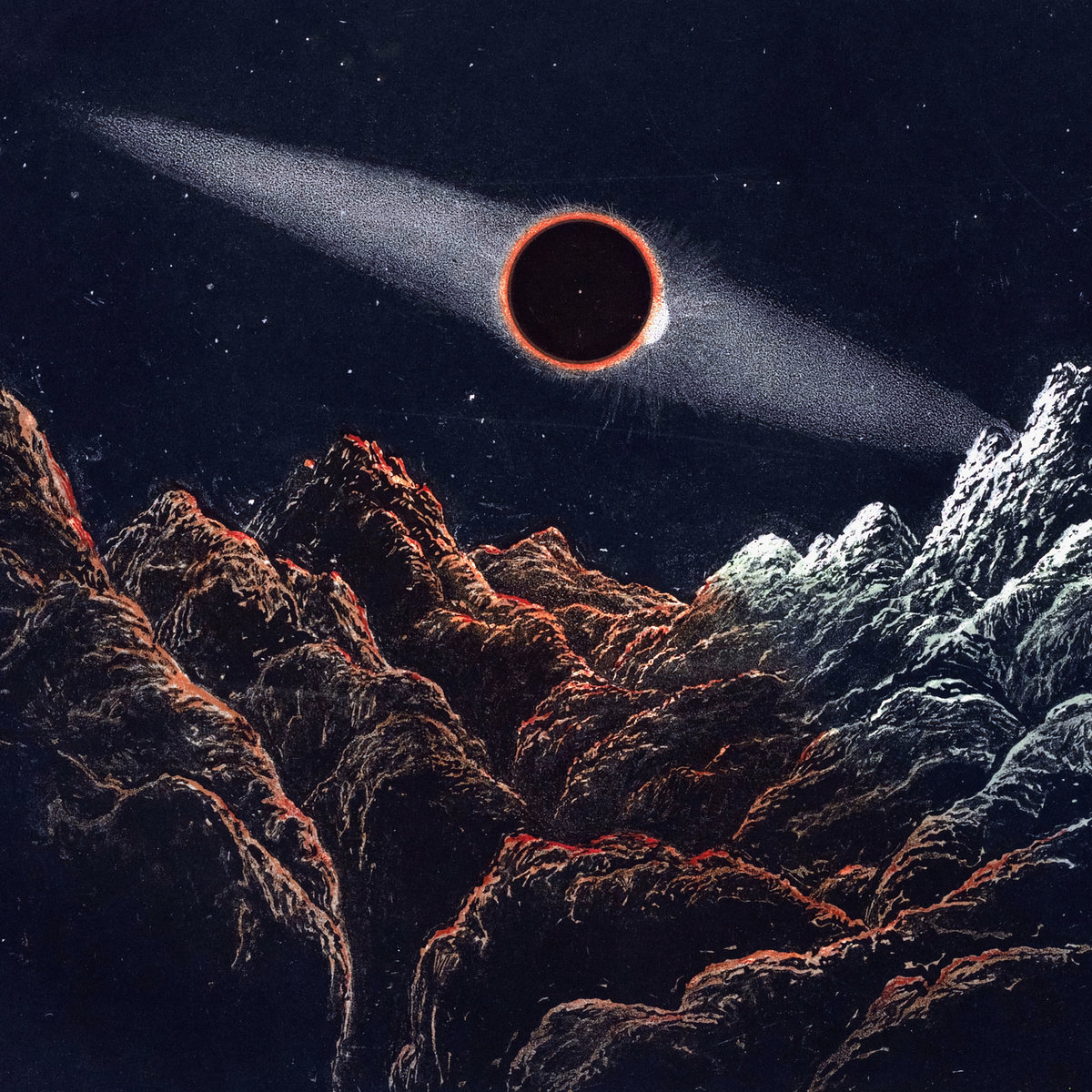 This fifth full-length from Yorkshire-based guitar visionary Dean McPhee is actually a compilation of sorts, bringing together the pieces from his out-of-print Cosmos / Ether lathe cut 7" (2022) with a couple of gems from Folklore Tapes compilation appearances. Happily, however, Astral Gold is also rounded out with a pair of new pieces and one of them ("The Sediment of Creation") easily ranks among McPhee's finest work. Given that I was already a huge fan of one of the Folklore Tapes pieces included here, that is more than enough to make this a solid release, but it is also an unexpectedly focused and thematically compelling one given the varied origins and inspirations of these songs. It is quite an aptly named release as well, as the languorously meditative and cosmic mood of these pieces seem like they would be an ideal soundtrack for any astral traveling that one might have on the horizon.
This fifth full-length from Yorkshire-based guitar visionary Dean McPhee is actually a compilation of sorts, bringing together the pieces from his out-of-print Cosmos / Ether lathe cut 7" (2022) with a couple of gems from Folklore Tapes compilation appearances. Happily, however, Astral Gold is also rounded out with a pair of new pieces and one of them ("The Sediment of Creation") easily ranks among McPhee's finest work. Given that I was already a huge fan of one of the Folklore Tapes pieces included here, that is more than enough to make this a solid release, but it is also an unexpectedly focused and thematically compelling one given the varied origins and inspirations of these songs. It is quite an aptly named release as well, as the languorously meditative and cosmic mood of these pieces seem like they would be an ideal soundtrack for any astral traveling that one might have on the horizon.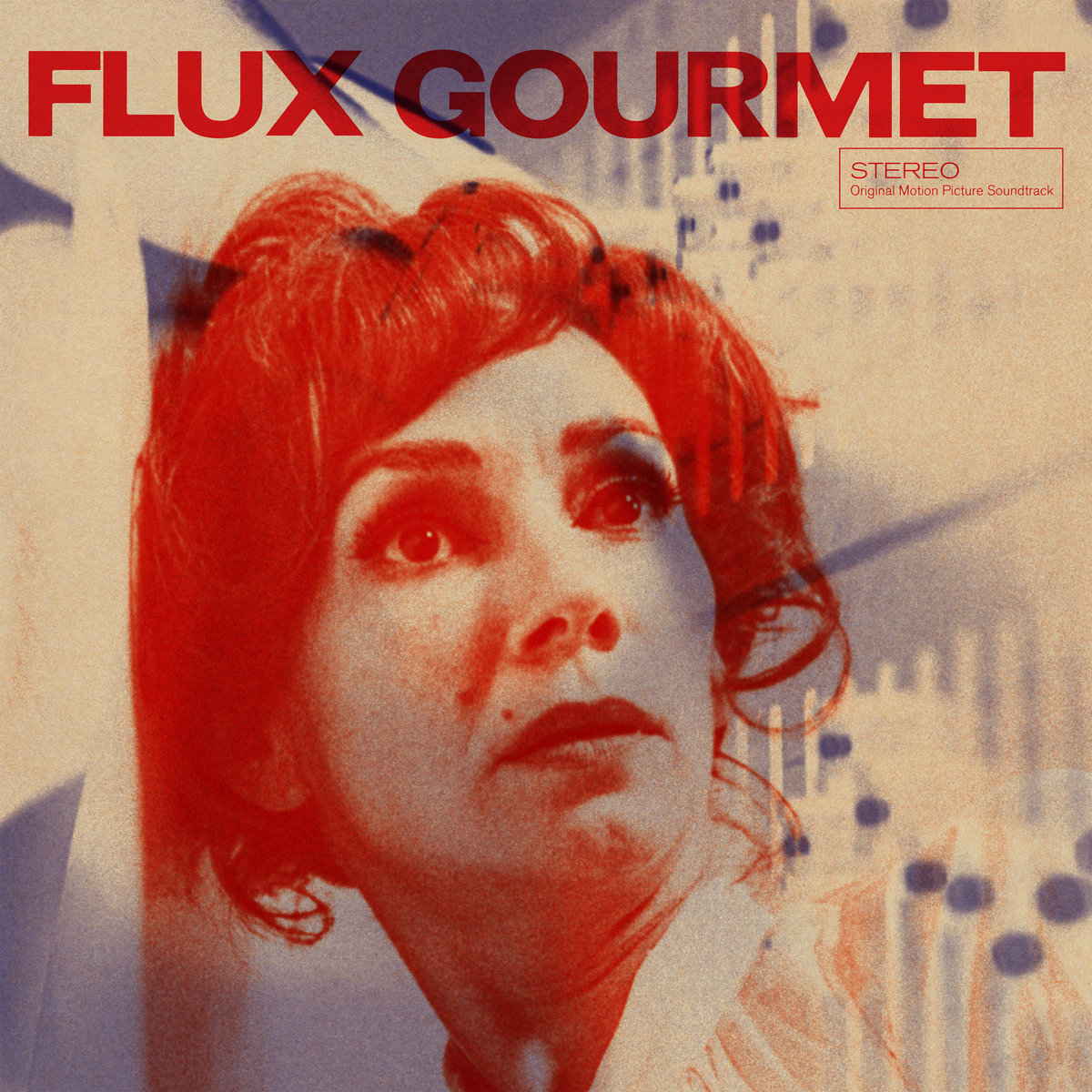 I acknowledge it is only February right now, but I believe I can confidently state that this soundtrack will be the weirdest and most mystifying new album that I will encounter this year. The film itself was released back in 2022 and follows the trials and tribulations of an imaginary performance art group during a surreal and contentious month-long artist residency. It is an absolutely brilliant and wickedly funny film (possibly director Peter Strickland's finest work) and joins similarly deranged fare like Holy Mountain in the pantheon of cinema so audaciously batshit crazy that it is hard to fathom how it was ever financed, cast, or released. As befits such a bananas endeavor, the soundtrack features a murderers' row of compelling artists from the experimental/psych fringes, drawing participants from Broadcast, Nurse With Wound, Stereolab, Neutral Milk Hotel, Swans, and elsewhere. Obviously, that seems like a solid recipe for a unique album, but it is a unique album with a twist, as the heart of it all is Strickland's own Sonic Catering Band, a shifting collective devoted to transforming the preparation of vegetarian meals into ritualistic noise performances.
I acknowledge it is only February right now, but I believe I can confidently state that this soundtrack will be the weirdest and most mystifying new album that I will encounter this year. The film itself was released back in 2022 and follows the trials and tribulations of an imaginary performance art group during a surreal and contentious month-long artist residency. It is an absolutely brilliant and wickedly funny film (possibly director Peter Strickland's finest work) and joins similarly deranged fare like Holy Mountain in the pantheon of cinema so audaciously batshit crazy that it is hard to fathom how it was ever financed, cast, or released. As befits such a bananas endeavor, the soundtrack features a murderers' row of compelling artists from the experimental/psych fringes, drawing participants from Broadcast, Nurse With Wound, Stereolab, Neutral Milk Hotel, Swans, and elsewhere. Obviously, that seems like a solid recipe for a unique album, but it is a unique album with a twist, as the heart of it all is Strickland's own Sonic Catering Band, a shifting collective devoted to transforming the preparation of vegetarian meals into ritualistic noise performances. This is the second album from the instrumental duo of Ellis Swan and James Schimpl and the first Dead Bandit album to follow Swan's killer 2022 solo album 3am. Happily, Memory Thirteen returns to the hypnagogic "witching hour" vibes of 3am, but it also marks a very compelling creative leap forward into fresh stylistic terrain. To my ears, that blearily dreamlike terrain is best described as "what if Boduf Songs scored a gig as the house band at a strip club in the Donnie Darko universe?" Needless to say, that is a very tricky and hyper-specific niche to fill, yet Dead Bandit consistently find new ways to combine hushed and haunted late-night melancholy with neon-soaked sensuousness, deadpan cool, and dreampop shimmer.
This is the second album from the instrumental duo of Ellis Swan and James Schimpl and the first Dead Bandit album to follow Swan's killer 2022 solo album 3am. Happily, Memory Thirteen returns to the hypnagogic "witching hour" vibes of 3am, but it also marks a very compelling creative leap forward into fresh stylistic terrain. To my ears, that blearily dreamlike terrain is best described as "what if Boduf Songs scored a gig as the house band at a strip club in the Donnie Darko universe?" Needless to say, that is a very tricky and hyper-specific niche to fill, yet Dead Bandit consistently find new ways to combine hushed and haunted late-night melancholy with neon-soaked sensuousness, deadpan cool, and dreampop shimmer.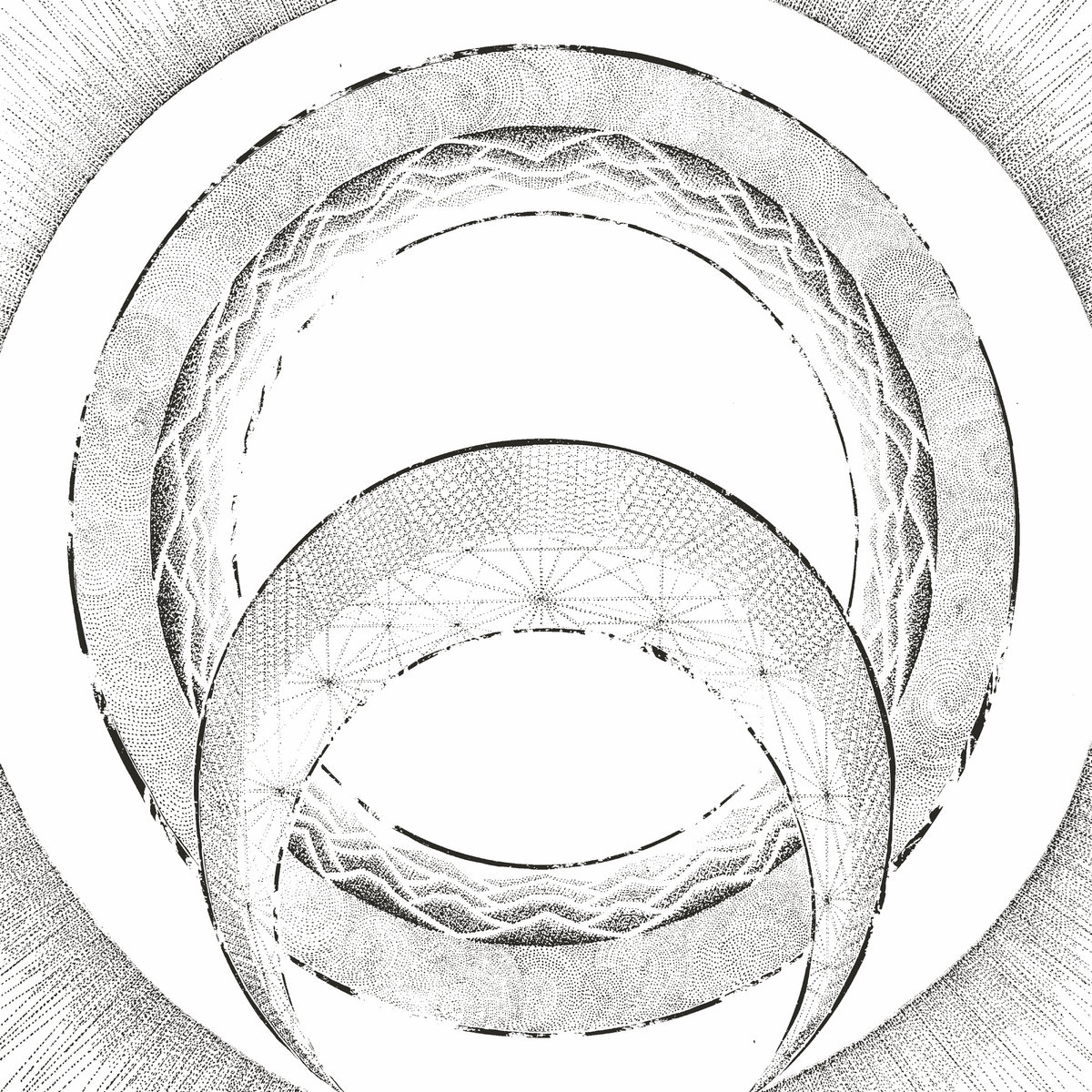 This is New York-based composer/puppeteer Tristan Allen's full-length debut and it is quite an ambitious one, as Tin Iso and the Dawn is the first chapter of a planned "shadow puppet symphony" trilogy loosely based on Wagner's "Tristan and Isolde" that has been in the works since 2015. From where I am standing, there are innumerable ways in which such an album could go wrong and they range from "forgettable score to cool puppet show" to "cloyingly precious" to "outright bombastic." Instead, however, Tin Iso and the Dawn sounds like a stone-cold masterpiece dropped by a creative supernova. Listening back to Allen's previous discography (a pair of classical piano EPs), it almost feels like this vision materialized out of nowhere, but the seeds of this puppet-centric magnum opus may have been planted more than a decade ago when Allen co-wrote a piece with Amanda Palmer in the early days of her "Dresden Dolls hiatus" solo career.
This is New York-based composer/puppeteer Tristan Allen's full-length debut and it is quite an ambitious one, as Tin Iso and the Dawn is the first chapter of a planned "shadow puppet symphony" trilogy loosely based on Wagner's "Tristan and Isolde" that has been in the works since 2015. From where I am standing, there are innumerable ways in which such an album could go wrong and they range from "forgettable score to cool puppet show" to "cloyingly precious" to "outright bombastic." Instead, however, Tin Iso and the Dawn sounds like a stone-cold masterpiece dropped by a creative supernova. Listening back to Allen's previous discography (a pair of classical piano EPs), it almost feels like this vision materialized out of nowhere, but the seeds of this puppet-centric magnum opus may have been planted more than a decade ago when Allen co-wrote a piece with Amanda Palmer in the early days of her "Dresden Dolls hiatus" solo career. Much to my surprise, my favorite tape music album of 2023 did not come from any of the usual suspects (Nonconnah, Lilien Rosarian, Ian William Craig, etc.) and instead came courtesy of this unusual collaboration between newly Parisian jazz pianist/composer Richard Sears and producer Ari Chersky. While I am unfamiliar with Sears' previous activities in NYC's avant-garde scene before his trans-Atlantic relocation, Appear to Fade is an entirely new animal altogether, as it is a series of collages built from decontextualized/recontextualized recordings of solo piano compositions and live improvisations. I can understand why this is being released as a Richard Sears album, given the fact that he played everything and has some serious jazz cred to boot, but the impact of Chesky's editing and healthy appreciation for pleasures of analog tape distortion elevates those recordings into something brilliant that feels far greater than the sum of its parts. While much of that success is due to the pair's unerring intuitions and Sears' undeniably beautiful playing, the real magic of Appear to Fade lies in how masterfully the duo were able to organically weave together looping melodies with fluid and spontaneous-sounding improvisations while evoking a mesmerizing mirage of elegantly shifting moods.
Much to my surprise, my favorite tape music album of 2023 did not come from any of the usual suspects (Nonconnah, Lilien Rosarian, Ian William Craig, etc.) and instead came courtesy of this unusual collaboration between newly Parisian jazz pianist/composer Richard Sears and producer Ari Chersky. While I am unfamiliar with Sears' previous activities in NYC's avant-garde scene before his trans-Atlantic relocation, Appear to Fade is an entirely new animal altogether, as it is a series of collages built from decontextualized/recontextualized recordings of solo piano compositions and live improvisations. I can understand why this is being released as a Richard Sears album, given the fact that he played everything and has some serious jazz cred to boot, but the impact of Chesky's editing and healthy appreciation for pleasures of analog tape distortion elevates those recordings into something brilliant that feels far greater than the sum of its parts. While much of that success is due to the pair's unerring intuitions and Sears' undeniably beautiful playing, the real magic of Appear to Fade lies in how masterfully the duo were able to organically weave together looping melodies with fluid and spontaneous-sounding improvisations while evoking a mesmerizing mirage of elegantly shifting moods. It has been a while since this duo of James Ginzburg and Paul Purgas last surfaced, but they are back with a new EP to celebrate Subtext's 50th release. Since releasing 2019's Blossoms, the pair have been quite busy with other projects, as Purgas's research played a crucial role in the release of The NID Tapes: Electronic Music from India 1969-1972 while Ginzburg has kept himself occupied with running a record label, releasing solo albums, and performing as part of "experimental supergroup" Osmium. Emptyset was never fully dormant, however, and Ginzburg and Purgas convened in Bristol this summer to shape their accumulated ideas into one of their most focused and singular releases in recent memory. It is also one of their most concise, as ash clocks in at an extremely lean 16-minutes. If this were any other project, that brevity would suggest a serious dearth of fresh ideas or compelling new material, but it is exactly the right length for a perfect distillation of Emptyset's viscerally spasmodic and pummeling percussion assaults.
It has been a while since this duo of James Ginzburg and Paul Purgas last surfaced, but they are back with a new EP to celebrate Subtext's 50th release. Since releasing 2019's Blossoms, the pair have been quite busy with other projects, as Purgas's research played a crucial role in the release of The NID Tapes: Electronic Music from India 1969-1972 while Ginzburg has kept himself occupied with running a record label, releasing solo albums, and performing as part of "experimental supergroup" Osmium. Emptyset was never fully dormant, however, and Ginzburg and Purgas convened in Bristol this summer to shape their accumulated ideas into one of their most focused and singular releases in recent memory. It is also one of their most concise, as ash clocks in at an extremely lean 16-minutes. If this were any other project, that brevity would suggest a serious dearth of fresh ideas or compelling new material, but it is exactly the right length for a perfect distillation of Emptyset's viscerally spasmodic and pummeling percussion assaults. I am almost always intrigued by the eclectic and unusual inspirations behind Marc Richter albums and this latest full-length for Thrill Jockey is no exception. The core concept at the heart of this one is the "hybridity within each and every one of us," which Richter set out to mirror through a mixture of self-created sounds and manipulated samples. Things got more interesting along the way, however, as Richter had the epiphany that his own methods are quite similar to artificial intelligence "hallucinations," which is a phenomenon in which an overloaded AI starts perceiving non-existent patterns or spewing incorrect or nonsensical conclusions.
I am almost always intrigued by the eclectic and unusual inspirations behind Marc Richter albums and this latest full-length for Thrill Jockey is no exception. The core concept at the heart of this one is the "hybridity within each and every one of us," which Richter set out to mirror through a mixture of self-created sounds and manipulated samples. Things got more interesting along the way, however, as Richter had the epiphany that his own methods are quite similar to artificial intelligence "hallucinations," which is a phenomenon in which an overloaded AI starts perceiving non-existent patterns or spewing incorrect or nonsensical conclusions.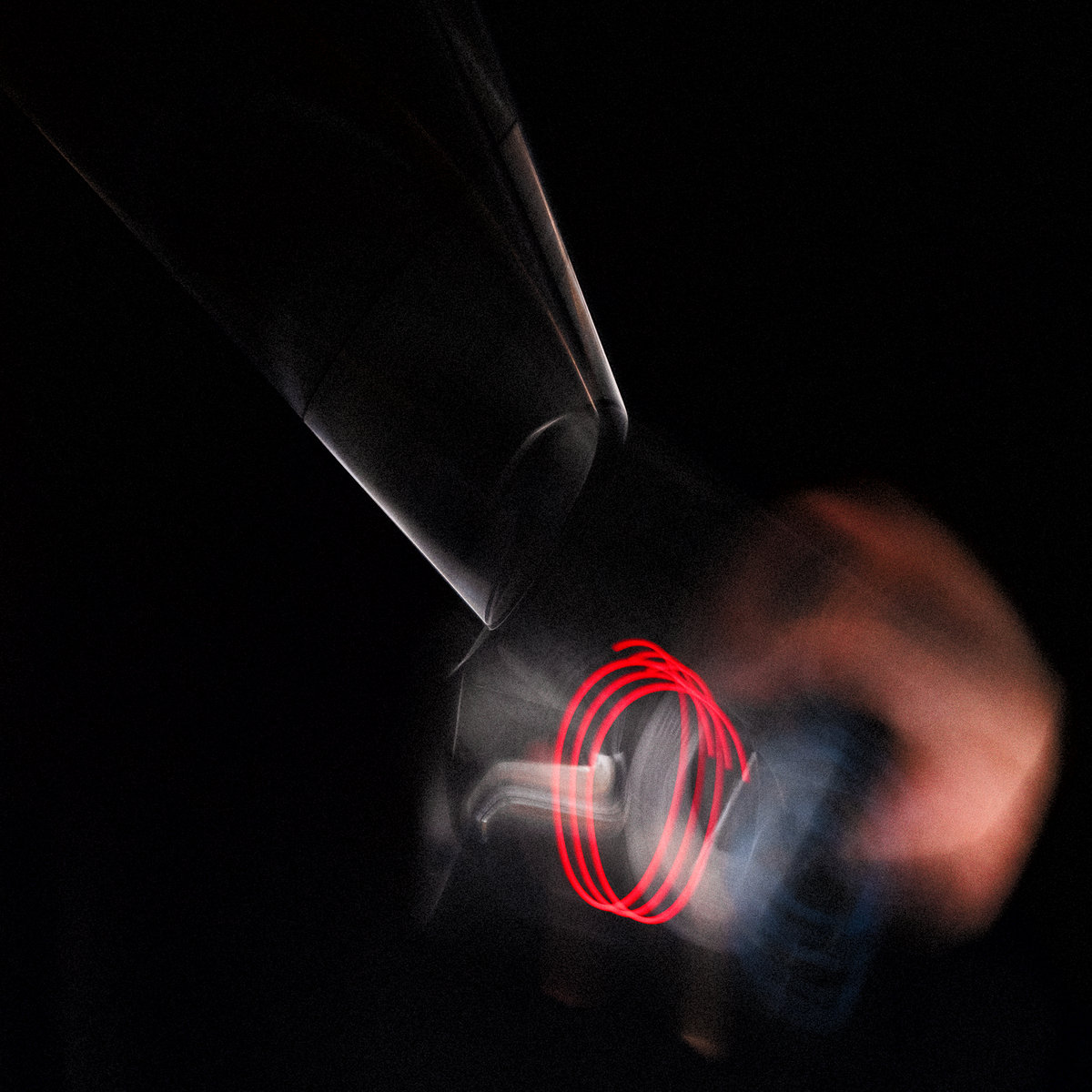 This is one of the more enigmatic and compellingly inscrutable albums that I have heard in quite some time, but I could probably say the same thing about a half dozen other Aki Onda albums at this point. This particular project began in 2006 when Onda acquired a slim handheld AM/FM radio/cassette recorder and began bringing it with him whenever he traveled: each night when he went to bed, he would turn on the radio and scan the dial in search of something interesting to soundtrack his descent into sleep.
This is one of the more enigmatic and compellingly inscrutable albums that I have heard in quite some time, but I could probably say the same thing about a half dozen other Aki Onda albums at this point. This particular project began in 2006 when Onda acquired a slim handheld AM/FM radio/cassette recorder and began bringing it with him whenever he traveled: each night when he went to bed, he would turn on the radio and scan the dial in search of something interesting to soundtrack his descent into sleep.  I have not encountered Dan Colussi's work before this album, but the Turin-born artist is a bit of a lifer, as he has been steadily releasing music and touring for the last 20 years with various Canadian bands "of varying degrees of obscurity." His solo project, Fortunato Durutti Marinetti, first surfaced back in 2020 with the acclaimed Desire cassette. This latest release is his second for Soft Abuse (and his first for Quindi) and it is something of a bold creative leap forward, as returning collaborator/producer Sandro Perri has steered the project into a more synthpop direction with the addition of synths, drum machines, and other electronic touches.
I have not encountered Dan Colussi's work before this album, but the Turin-born artist is a bit of a lifer, as he has been steadily releasing music and touring for the last 20 years with various Canadian bands "of varying degrees of obscurity." His solo project, Fortunato Durutti Marinetti, first surfaced back in 2020 with the acclaimed Desire cassette. This latest release is his second for Soft Abuse (and his first for Quindi) and it is something of a bold creative leap forward, as returning collaborator/producer Sandro Perri has steered the project into a more synthpop direction with the addition of synths, drum machines, and other electronic touches. 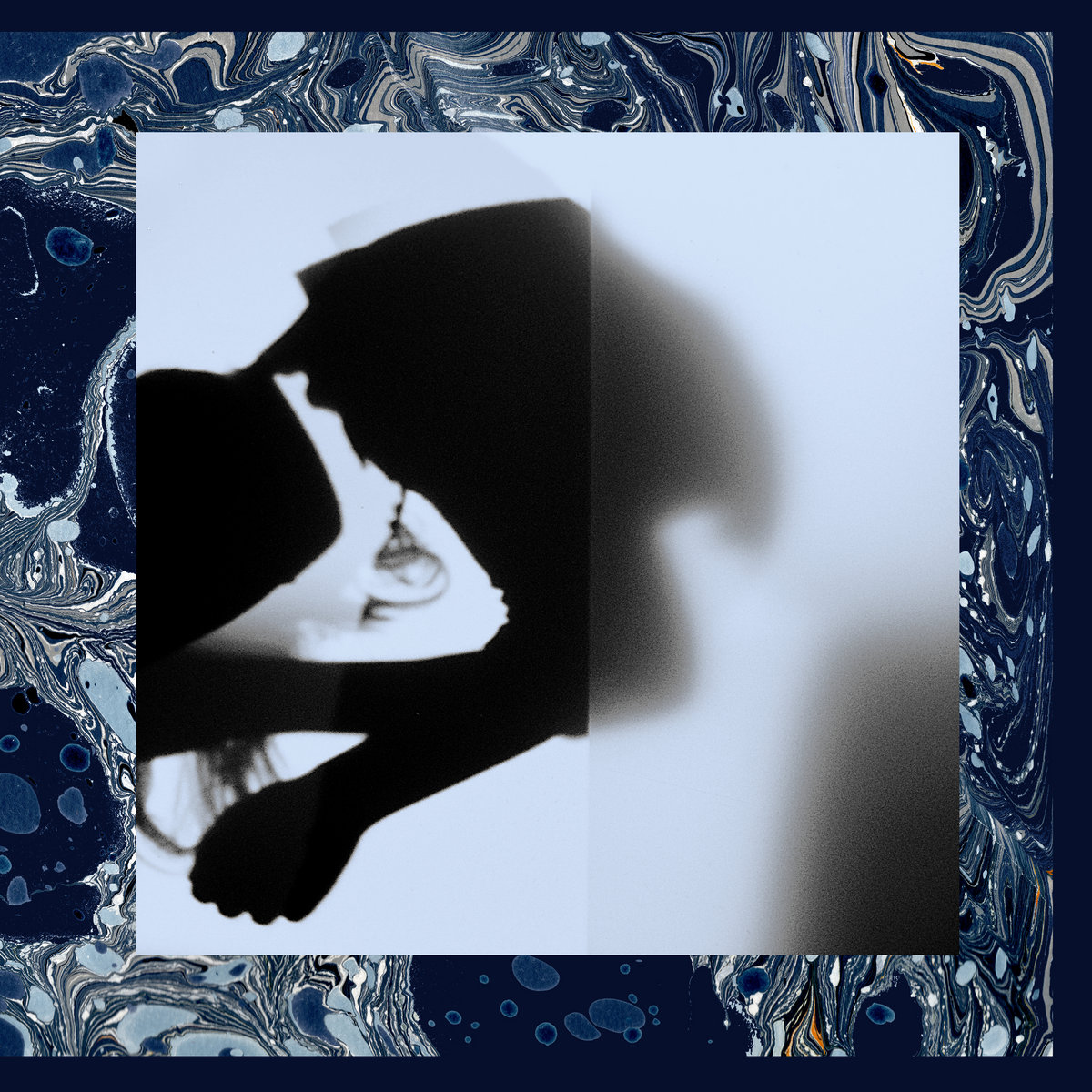 This latest full-length from NY-based composer/multi-instrumentalist Lea Bertucci features two longform Just Intonation commissions composed for small ensembles. Given that, it is no surprise that Of Shadow and Substance is a unique album within her discography, but the added participants and the non-standard tuning were not the only new elements, as Bertucci embraced a "textural approach to composition" as well.
This latest full-length from NY-based composer/multi-instrumentalist Lea Bertucci features two longform Just Intonation commissions composed for small ensembles. Given that, it is no surprise that Of Shadow and Substance is a unique album within her discography, but the added participants and the non-standard tuning were not the only new elements, as Bertucci embraced a "textural approach to composition" as well.  This six-song album borrows its title from a beloved Croatian hotel damningly slated for modernization, which is a fitting inspiration for an album that "celebrates and mourns the tragedy and beauty of the ephemeral." Obviously, that is an especially resonant theme these days, given the endlessly accelerating pace of change and the relentless erosion of the comforting and familiar. Lattimore has always been unusually well-attuned to such feelings, but Goodbye, Hotel Arkada is also inspired by her passions for collaboration and travel, both of which "shake loose strands of inspiration."
This six-song album borrows its title from a beloved Croatian hotel damningly slated for modernization, which is a fitting inspiration for an album that "celebrates and mourns the tragedy and beauty of the ephemeral." Obviously, that is an especially resonant theme these days, given the endlessly accelerating pace of change and the relentless erosion of the comforting and familiar. Lattimore has always been unusually well-attuned to such feelings, but Goodbye, Hotel Arkada is also inspired by her passions for collaboration and travel, both of which "shake loose strands of inspiration." This is not my first exposure to Nathan Nelson's freewheeling Twin-Cities improv collective, but it may as well have been, as the droning kosmische psychedelia of last year's Embrace You Millions provided no hint at all of the dramatic stylistic reinvention looming on the horizon. To my ears, the band's entertaining new direction is best described as "James Chance fronts the B-52s," but the album's description goes even further and promises both "a spiritually-charged journey" and "a shit-kicking party record." The fact that Presents emphatically delivers on the latter claim is quite an impressive feat indeed, as the number of shit-kicking party records successfully recorded by shapeshifting collectives of synth and space rock enthusiasts tends to historically be quite low. To their everlasting credit, American Cream Band buck that trend quite decisively, as Nelson seems literally evangelical in his desire to make a fun and raucous party album and he assembled one hell of a killer band to bring that dream to life.
This is not my first exposure to Nathan Nelson's freewheeling Twin-Cities improv collective, but it may as well have been, as the droning kosmische psychedelia of last year's Embrace You Millions provided no hint at all of the dramatic stylistic reinvention looming on the horizon. To my ears, the band's entertaining new direction is best described as "James Chance fronts the B-52s," but the album's description goes even further and promises both "a spiritually-charged journey" and "a shit-kicking party record." The fact that Presents emphatically delivers on the latter claim is quite an impressive feat indeed, as the number of shit-kicking party records successfully recorded by shapeshifting collectives of synth and space rock enthusiasts tends to historically be quite low. To their everlasting credit, American Cream Band buck that trend quite decisively, as Nelson seems literally evangelical in his desire to make a fun and raucous party album and he assembled one hell of a killer band to bring that dream to life.
